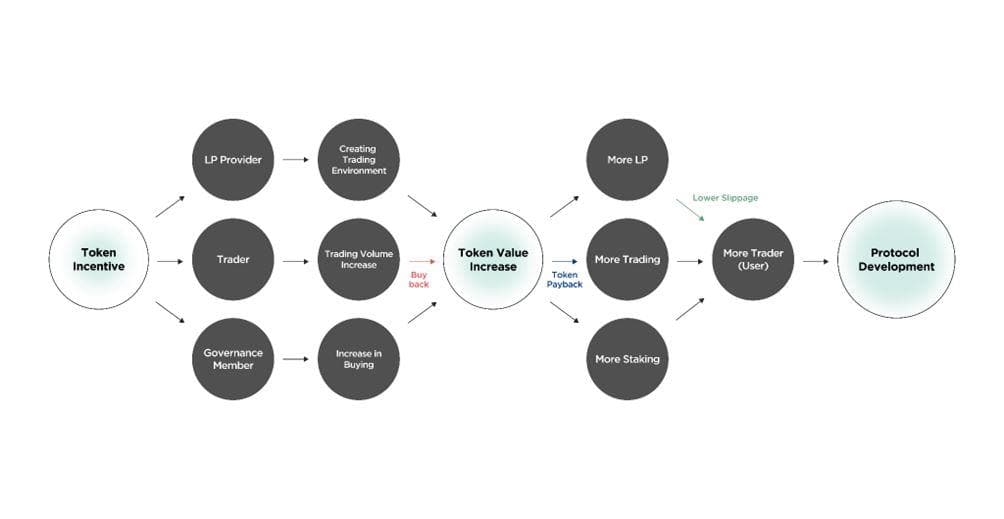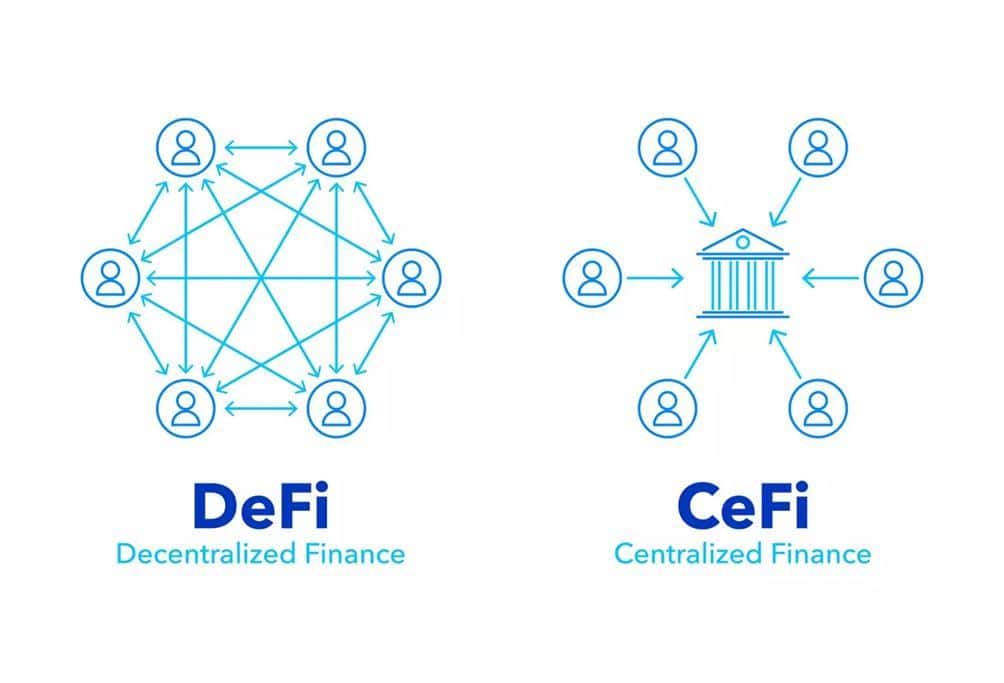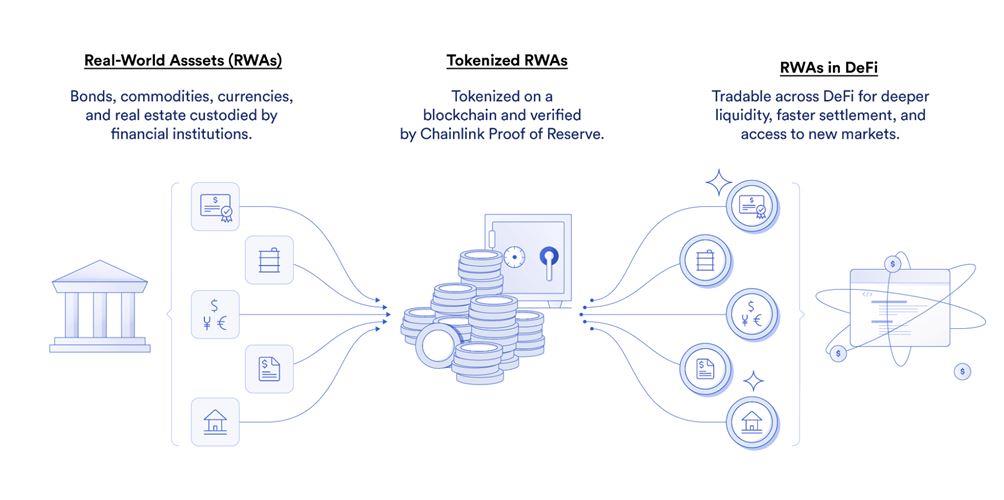As innovative technologies make an unfavorable impact on the environment, a new trend is emerging to solve energy and climate issues. It’s called green blockchain technology. It uses proof-of-stake protocols and incorporates renewable energy, leading us toward a sustainable future. This innovation addresses concerns like energy use, decentralization, and scalability, creating renewable and inclusive growth models.
Let’s look at the most meaningful aspects of this innovation.

Sustainable investment opportunities
Investing in green cryptocurrencies is a significant practice related to environmentally friendly blockchain. Here are five noteworthy eco-friendly crypto projects in 2025.
LPX (Launchpad XYZ)
Launchpad XYZ is revolutionizing the Web 3.0 investment landscape by providing crypto and NFT insights, analytics, and intelligent data tools. Its clear navigation opens doors to private ICOs, metaverse experiences, decentralized token swaps, fractional assets, and more. Within its ecosystem, LPX, a proprietary cryptocurrency, serves both as a utility and an investment, granting exclusive features and benefits.
CHMPZ (Chimpzee)
Chimpzee, a recent entrant in the green crypto market, is offering a presale event featuring CHMPZ tokens at an undervalued price. The Chimpzee ecosystem, a Web3 project, focuses on providing users with multiple avenues for earning passive income. Earnings can be realized through play-to-earn, shop-to-earn, and trade-to-earn mechanisms, with users needing Chimpzee NFT passports purchased using CHMPZ tokens to get started. Higher-tier NFT passports offer enhanced earning opportunities.
BTC20
This one is often considered the next Bitcoin as it offers investors the chance to replicate Bitcoin’s historical success. BTC20 tokens are available for $1, allowing investors to stake their investments for passive rewards. The BTC20 roadmap mirrors that of the original Bitcoin, featuring a total supply of 21 million tokens and a 120-year staking contract. However, BTC20 differentiates itself with its use of the Proof-of-Stake (PoS) mechanism, which is much more eco-friendly than Bitcoin’s traditional Proof-of-Work (PoW).
ECOTERRA (EcoTerra)
EcoTerra is a standout eco-friendly crypto project for 2025. It is an innovative concept aiming to incentivize recycling by rewarding users for recycling everyday materials. Participants receive valuable tokens as rewards, which can be converted into cash or used for making sustainable choices. Positioned well in a recycling-demanding market, EcoTerra boasts a unique ecosystem led by an experienced team of blockchain and sustainability professionals.
CCHG (C+ Charge)
C+ Charge stands out as a unique project poised to revolutionize the electric vehicle (EV) industry over the next decade. Early investment opportunities are available through an ongoing token presale, supporting project growth and development. C+ Charge functions as a peer-to-peer payment system, aiming to streamline payments at EV charging stations and reward users opting for sustainable transportation.
Eco-friendly tokenomics
An emerging generation of crypto protocols is integrating sustainability into their very designs, giving rise to eco-friendly token models that could transform finance.
One innovation is the proof-of-stake (PoS) consensus model. By replacing computationally intensive crypto mining with staking, networks like Ethereum 2.0 and Cardano enable participants to validate transactions while drastically reducing energy use and carbon emissions.
New token standards are also directly linking growth to ecological outcomes. Social impact tokens tie ecosystem expansion to measurable sustainability goals. Regenerative token designs allow communities to transparently fund restoration projects on-chain.
On decentralized exchanges, renewable energy tokens are connecting green power generators directly with funding streams. Tokenized carbon credits are also opening carbon markets to global retail participation. And increasingly, DeFi protocols are integrating sustainability factors into lending, borrowing, and staking mechanisms.

Green bonds
The convergence of green bonds and blockchain technology marks a pivotal moment in the evolution of ethical financial instruments. These bonds, a vital tool in funding sustainability initiatives, have surged in importance over the past decade.
Environmental, social, and governance (ESG) bonds have become increasingly intricate, characterized by diverse taxonomies, principles, and certification systems. At its core, a bond is issued, and the funds raised are allocated to projects expected to deliver positive environmental outcomes. The issuer must then provide reports on the impact of these projects. Investors anticipate that these assets will command a premium, encouraging issuers to engage in environmentally beneficial activities.
Yet, within this process, blockchain technology can play a transformative role in several key areas:
- Digitalization Benefits
Just as technology has revolutionized conventional financial instruments, it can offer similar advantages to green bonds. Digitalization streamlines processes, reduces friction, and makes entry into the market more accessible. Smaller issuers, including SMEs, often struggle to access capital markets due to the costs associated with setting up programs. Blockchain can lower these barriers.
- Efficient Data Gathering
Issuers often find producing impact reports labor-intensive and costly. Gathering and managing the volume and quality of data required for bond issuance can be a formidable challenge. Data collection can be optimized, making it more efficient and cost-effective.
One of the primary hurdles in the green bond market is the lack of standardized impact reporting. Each issuer typically produces its own framework documents, leading to a lack of comparability among assets. Blockchain can address this issue by harmonizing and structuring data provided in ESG frameworks and impact reports.
Sustainable cryptocurrency mining
Cryptocurrency mining, an essential process for verifying and recording cryptocurrency transactions, is often associated with energy-intensive operations that rely on fossil fuels, contributing to carbon emissions and climate change. However, innovative practices, driven by green blockchain technology, are paving the way for sustainable and environmentally responsible mining operations.
One of the most significant developments in sustainable cryptocurrency mining is the transition to renewable energy sources. Traditional mining operations often draw power from coal or other fossil fuels, which have a substantial carbon footprint. In contrast, eco-friendly crypto mining harnesses energy from renewable sources like solar power, hydroelectric power, and even nuclear energy, significantly reducing or completely eliminating carbon emissions.
Calculating the sustainability of cryptocurrency mining isn’t solely about measuring carbon emissions. It’s a multifaceted endeavor that requires a comprehensive understanding of the energy mix powering mining operations. Similar to tracing a supply chain, determining the environmental impact hinges on knowing the energy sources involved. For instance, one unit of hydro energy has significantly less environmental impact than the equivalent unit of coal-powered energy.
“Zero carbon” and “carbon-neutral” are terms often used to describe sustainability, but they aren’t interchangeable. Zero carbon implies that no carbon emissions were generated during a product or service’s creation. On the other hand, carbon neutrality involves offsetting emissions by supporting activities like forest preservation or tree planting.
Decentralized finance (DeFi) for sustainability
Decentralized finance (DeFi) is an alternative to traditional financial systems. It operates on blockchain technology and offers a transformative avenue for achieving sustainable financial systems that foster economic development while curbing negative environmental and social effects.
DeFi offers a host of advantages for advancing sustainable finance over traditional systems:
- Elimination of Intermediaries
DeFi streamlines processes by eliminating intermediaries, lowering transaction costs, and broadening access to financial services.
- Enhanced Transparency
The decentralized nature of DeFi fosters transparency, making it easier to assess and monitor ESG factors.
- Heightened Security
DeFi enhances security, reducing the risk of fraud and corruption.
While DeFi holds tremendous potential for sustainable finance, several challenges must be addressed:
- Lack of Standardization
DeFi is still in its early stages, lacking standardized protocols, which complicates integration into existing financial systems.
- Regulatory Uncertainty
The absence of clear regulatory frameworks poses challenges in ensuring compliance with ESG standards.
Impact investing
Impact investing uniquely combines financial returns with quantifiable positive impacts. Cryptocurrency investors target both developed and emerging markets, seeking returns while achieving social and environmental goals.
This growing investment approach aims to address urgent worldwide challenges. Sectors include renewable energy, conservation, microfinance, healthcare access, housing, education, and sustainable agriculture.
Green blockchain presents new ways to empower worldwide change through finance. It allows individuals, organizations, and communities to make a tangible difference by addressing global challenges. Adopting blockchain for impact investing has multiple advantages:
- Guaranteeing accountability through records
Encrypted impact data ensures accountability and transparency. Decentralized records transparently track funds, guaranteeing proper investment allocation and use.
- Building confidence through immutability
By ensuring tamper-proof, transparent records, blockchain builds trust between participants. The immutable ledger makes altering impact investment data impossible without agreement.
- Proving impacts through metrics
Blockchain enables impact tokens with embedded impact measurement. Smart contracts automatically gather verified metrics like renewable energy produced or social program beneficiaries. The auditable data provides transparent, trustworthy impact information.
- Expanding access through fractionalization
Impact tokens enable fractional asset ownership, increasing investment access and market liquidity.
- Building connected communities
Impact tokens have created ecosystems with diverse stakeholders like project developers, investors, analysts, exchanges, and platforms. These ecosystems collaborate to issue, trade, and manage tokens.
- Accelerating transactions through automation
Smart contracts streamline and automate processes, expediting impact investments while cutting costs and paperwork. They reduce intermediaries and administrative burdens to accelerate transactions.
- Unlocking new impact finance models
Tokenization enables innovative financing for social and environmental initiatives, expanding impact investing opportunities. It allows fractional ownership of impact project assets, facilitating investments at all scales.
- Empowering borderless participation
Eco-friendly blockchain enables seamless global transactions, reducing costs and intermediaries. It allows those lacking access to traditional finance to participate in impact investments worldwide.
Blockchain-based ESG ratings
As sustainable investing gains momentum, credible ESG ratings (environmental, social, and governance are crucial for informing investment decisions. However, current ESG scoring methodologies often lack transparency. Now, green blockchain technology presents an opportunity to transform ESG analytics.
By applying blockchain to ESG ratings, the entire calculation process could become an immutable record. Rating agencies would commit their methodologies to transparent, auditable smart contracts. All underlying data inputs would be verifiable on-chain.
This radical transparency enables asset managers to analyze the strengths and weaknesses of different rating approaches. Investors gain greater insight into each score, empowering more informed decisions.
Green blockchain also facilitates new decentralized rating models. Networks like VeChain allow issuers to submit verified ESG data directly. Stakeholders can then collectively evaluate performance. Technology even enables real-time ESG scoring using oracles to connect with IoT sensors.

Eco-friendly asset tokenization
As the world transitions to renewable energy, new modes of financing eco-friendly infrastructure are essential. Now, tokenization offers an opportunity to transform sustainable project funding.
By tokenizing ownership of assets like solar plants, wind farms, and eco-friendly buildings, developers can open up investment in clean infrastructure to a global retail market. Tradable security tokens allow anyone to own fractional shares in projects reducing emissions.
Tokenized green assets also gain 24/7 liquidity, as they are tradable anytime on decentralized exchanges. And they reduce costly middlemen by automating dividend payouts via smart contracts.
Overall, asset tokenization brings inclusivity, efficiency, and transparency to eco-friendly infrastructure investment. Locally funded community solar projects can accept global backers. Renewable microgrids in the developing world can access crowdfunding. And real-time IoT data makes environmental impacts verifiable on-chain.

Climate risk assessment
Evaluating climate risks is becoming imperative for financial institutions. Legacy tools often lack the transparency and analytical power required. Now, innovative eco-friendly blockchain platforms offer advanced climate risk assessment.
By connecting climate data to transparent on-chain records, blockchain networks enable granular analysis of exposures across portfolios. From asset locations to emissions, key risk indicators become immutable datasets. Real-time climate oracles then allow scenario modeling using verified data.
Robust analytics also facilitate comprehensive risk quantification. Platforms like Chainlink combine data from climate models, IoT sensors, and satellites to calculate probabilistic climate risk pricing for locations and assets. This unlocks accurate pricing of climate risks and impacts.
Additionally, smart contract automation enables streamlined mitigation strategies. Climate derivatives like parametric insurance against weather events can instantly trigger payouts when conditions are met. Climate dot bonds with coupon adjustments based on sustainability KPIs align incentives.
Overall, environmentally friendly blockchain brings new transparency and analytics to climate risk management. As weather-related disruptions intensify, blockchain will provide the modeling, quantification, and mitigation tools institutions need to navigate the climate storm. The path to resilience begins here.
Conclusion
From eco-friendly token engineering to transparent climate analytics, decentralized networks are integrating environmental stewardship into the very DNA of blockchain technology. As this vital fusion continues gaining momentum, it promises to unlock new horizons of inclusive, accountable, and renewable economics. With ethical imperatives rising, sustainable transformation has arrived. Led by pioneering blockchain development companies, this eco-friendly technology now embraces its epochal potential to build an ecological civilization for the 21st century and beyond.
Chris Mcdonald has been the lead news writer at complete connection. His passion for helping people in all aspects of online marketing flows through in the expert industry coverage he provides. Chris is also an author of tech blog Area19delegate. He likes spending his time with family, studying martial arts and plucking fat bass guitar strings.